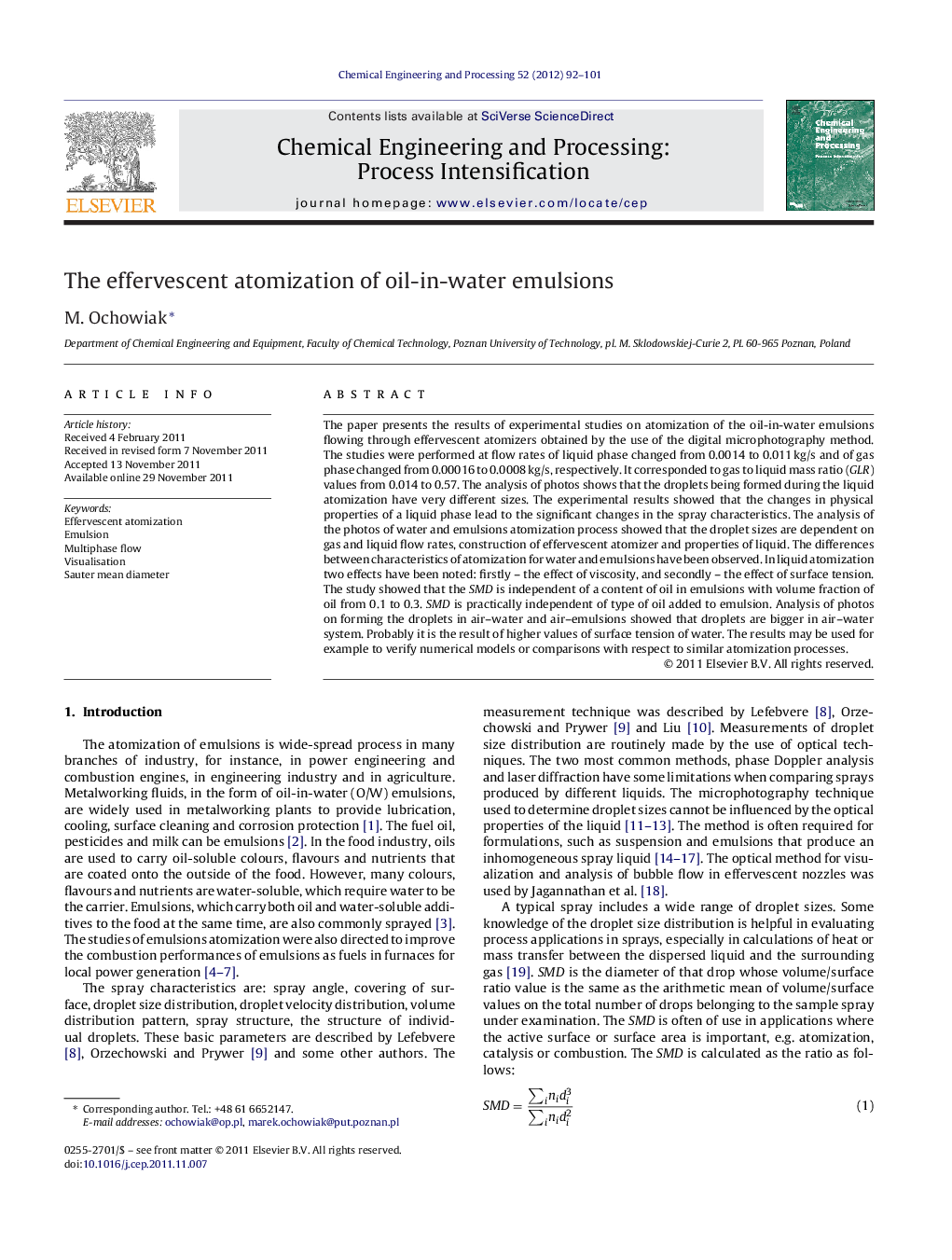| Article ID | Journal | Published Year | Pages | File Type |
|---|---|---|---|---|
| 688373 | Chemical Engineering and Processing: Process Intensification | 2012 | 10 Pages |
The paper presents the results of experimental studies on atomization of the oil-in-water emulsions flowing through effervescent atomizers obtained by the use of the digital microphotography method. The studies were performed at flow rates of liquid phase changed from 0.0014 to 0.011 kg/s and of gas phase changed from 0.00016 to 0.0008 kg/s, respectively. It corresponded to gas to liquid mass ratio (GLR) values from 0.014 to 0.57. The analysis of photos shows that the droplets being formed during the liquid atomization have very different sizes. The experimental results showed that the changes in physical properties of a liquid phase lead to the significant changes in the spray characteristics. The analysis of the photos of water and emulsions atomization process showed that the droplet sizes are dependent on gas and liquid flow rates, construction of effervescent atomizer and properties of liquid. The differences between characteristics of atomization for water and emulsions have been observed. In liquid atomization two effects have been noted: firstly – the effect of viscosity, and secondly – the effect of surface tension. The study showed that the SMD is independent of a content of oil in emulsions with volume fraction of oil from 0.1 to 0.3. SMD is practically independent of type of oil added to emulsion. Analysis of photos on forming the droplets in air–water and air–emulsions showed that droplets are bigger in air–water system. Probably it is the result of higher values of surface tension of water. The results may be used for example to verify numerical models or comparisons with respect to similar atomization processes.
► The SMD is dependent on gas and liquid flow rates, construction of nozzle and properties of a liquid sprayed. ► SMD is decreasing with increase of atomizer outlet diameter. ► The droplets are bigger in air–water system. ► The experimental data are approximated by the relationship SMD = A (GLA·Re0.5)B.
